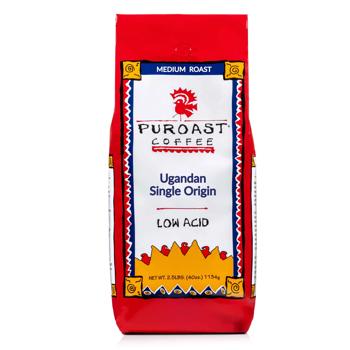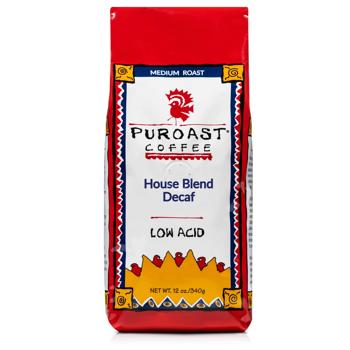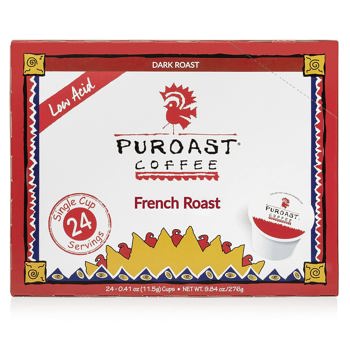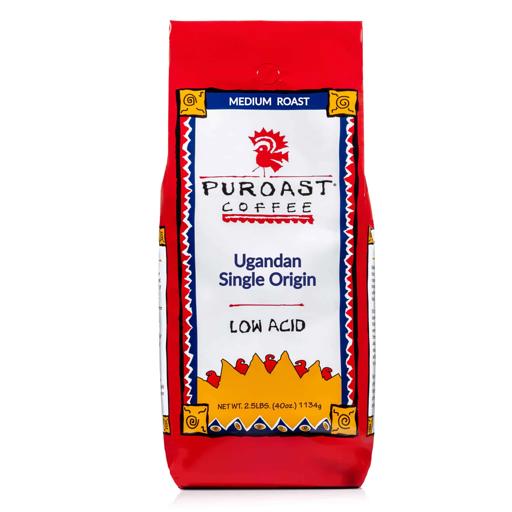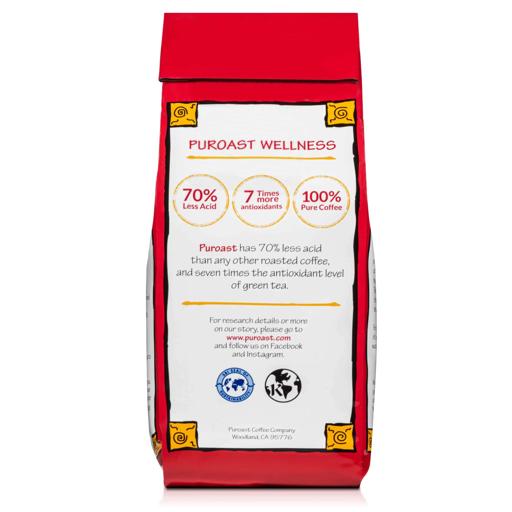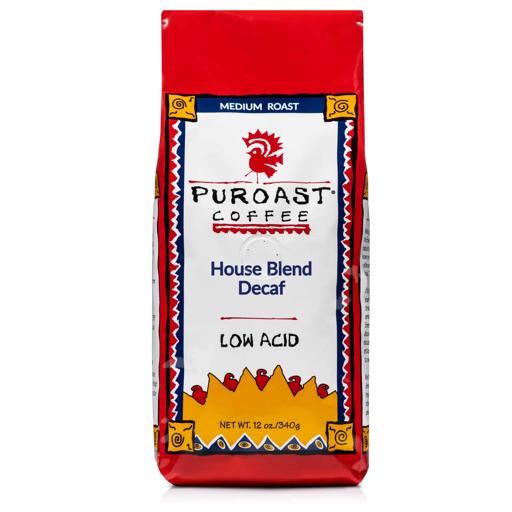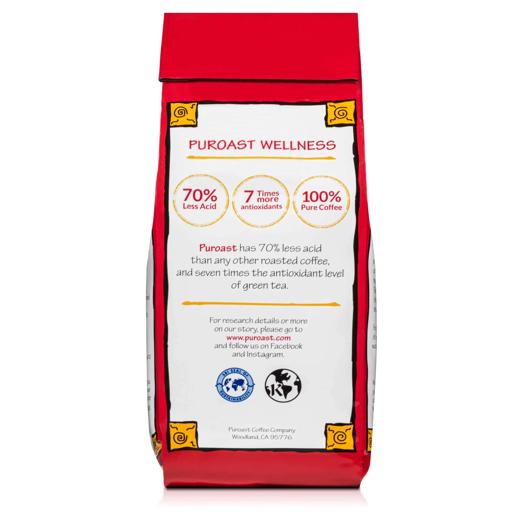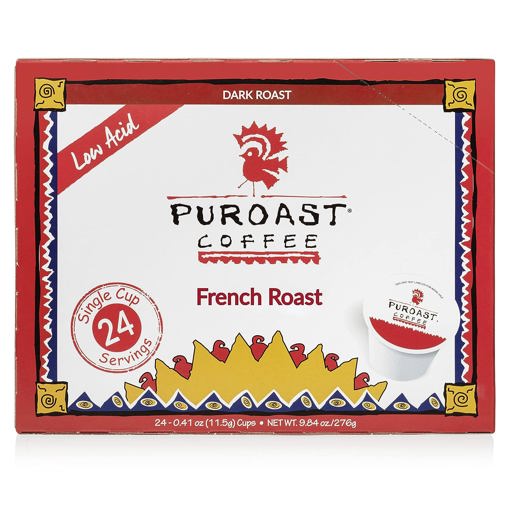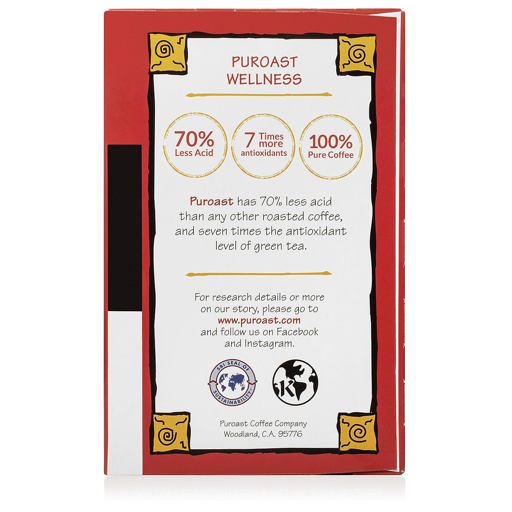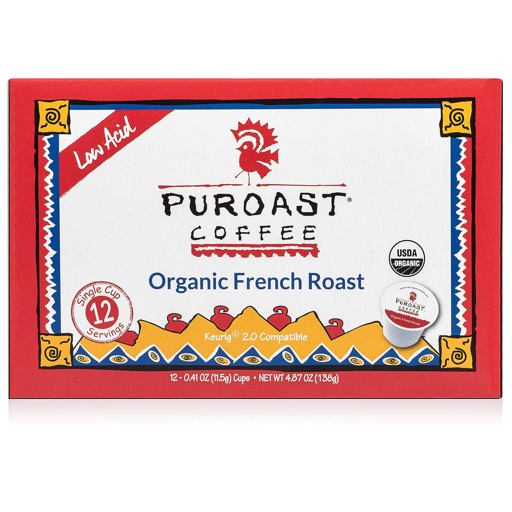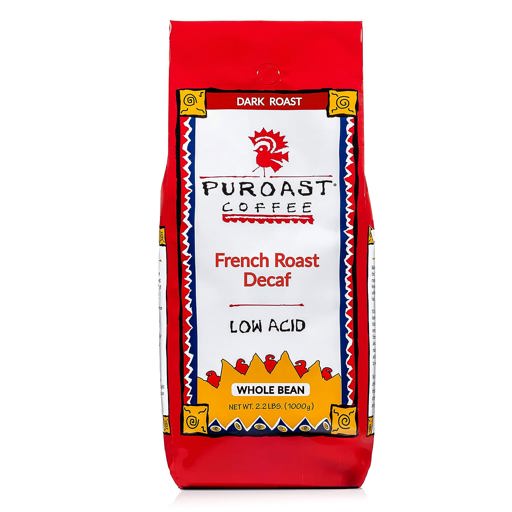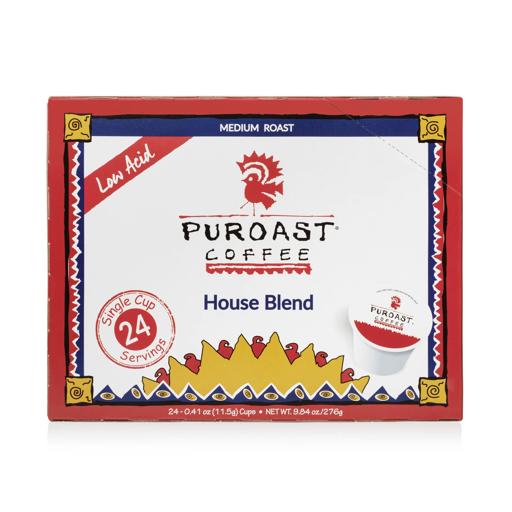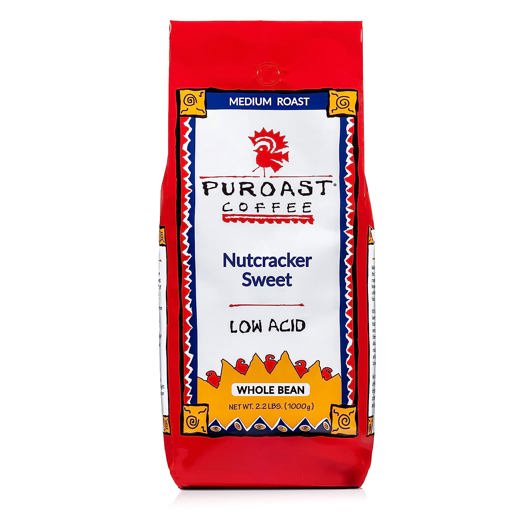Bestsellers for Low Acid Coffee
Measuring Antioxidant Content in Coffee

Coffee is a significant source of antioxidants in the average diet, but not all coffee has the same antioxidant levels. The roasting process plays a crucial role in determining these levels; different roast profiles can enhance or degrade certain antioxidants.
The primary antioxidants found in coffee include chlorogenic acids, melanoidins, and caffeic acid. Chlorogenic acids are most abundant in green coffee beans and can be reduced during roasting. Melanoidins form during the Maillard reaction as beans are roasted and contribute both to flavor development and antioxidant capacity.
To measure these components accurately:
Chlorogenic Acids: These compounds have been linked with various health benefits such as improved glucose metabolism.
Melanoidins: They provide not only antioxidative properties but also influence color and taste of the brewed beverage.
Caffeic Acid: This phenolic compound is known for its anti-inflammatory effects.
Understanding this content helps consumers make informed decisions about their coffee choices based on desired health benefits. In particular, low-acid coffee brands like Puroast are noteworthy for their antioxidant content. The unique roasting process utilized by Puroast converts chlorogenic acids in coffee into phenols (flavonols) and simultaneously reduces the acidity and bitterness of the coffee. Scientific research has confirmed that Puroast coffee has 7 times more antioxidants than green tea and 5 times more antioxidants than other leading coffee brands. By converting those bitter acids into antioxidants during the roasting process, Puroast is able to produce naturally low-acid coffee that is gentle on sensitive stomachs while maintaining the flavorful taste that coffee enthusiasts enjoy.
When selecting your next bag of beans or brewing at home, consider how roast level might impact both flavor profile and potential health advantages associated with your cup of joe—choose products that prioritize preserving natural antioxidants could offer added value beyond just taste alone.
Factors Affecting Antioxidant Levels in Coffee Beans
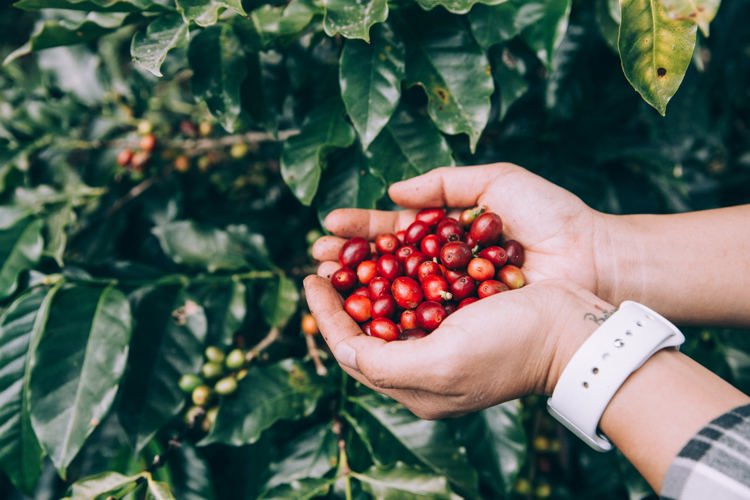
The type of bean, its origin, and how it is processed before roasting all play a role in determining the final antioxidant content. Firstly, the species of coffee plant can affect antioxidant levels. Arabica beans are generally higher in antioxidants than Robusta beans due to their different compositions and growing conditions. Secondly, where these plants are grown also matters; soil quality, altitude, and climate contribute to nutrient profiles which include antioxidants.
The processing method used after harvesting—whether washed or natural—affects not only flavor but also how many antioxidants remain intact by either removing or preserving compounds during fermentation and drying stages.
Here’s what you need to know about each factor:
Coffee Species: Arabica typically has more antioxidants compared with Robusta.
Geographical Origin: Beans from regions with rich volcanic soils like Central America may have higher antioxidant contents.
Processing Method: Natural (dry) processing tends to retain more antioxidants than washed (wet) methods because less chlorogenic acid is leached away by water.
Understanding these variables allows consumers seeking health benefits from their coffee consumption an opportunity for informed decision-making regarding their purchases. For those who prioritize both wellness aspects as well as taste experience without harsh acidity effects on digestion – selecting a low-acid variety could be beneficial since such options tend not only preserve but potentially enhance inherent antioxidative properties within the beans themselves through careful cultivation practices leading up until roasting stage itself where further preservation occurs based upon specific techniques employed therein ensuring gentle yet effective heat application throughout process duration thereby maintaining optimal pH balance above critical level 5.5 alongside significant reduction relative acidic content overall when compared against traditional offerings available market today thus providing smoother cup every time without sacrificing any potential nutritional advantages might otherwise be lost conventional preparation methodologies commonly utilized industry-wide currently.
How Roasting Influences Antioxidant Properties
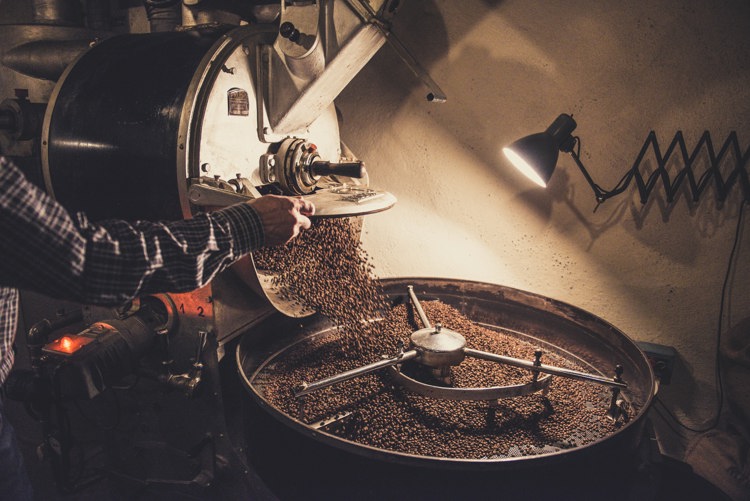
As beans are roasted, chemical reactions occur that can both create and break down antioxidants. Lighter roasts tend to retain more chlorogenic acid, which has been associated with health benefits such as reduced inflammation and improved blood sugar control. However, darker roasts may have higher levels of other beneficial compounds like melanoidins due to the longer roast time.
Here's how different roast levels typically affect antioxidant content:
Light Roast: These beans are roasted for a shorter period, preserving more chlorogenic acids but may have fewer melanoidins.
Medium Roast: Offering a balance between light and dark roasts, medium-roasted beans still contain significant amounts of chlorogenic acids while beginning to develop richer flavors and some melanoidin formation.
Dark Roast: With extended roast times leading to deeper colors and bolder flavors, these beans often feature increased melanoidin content at the expense of some chlorogenic acids.
When shopping for your next batch of coffee or preparing it at home, consider how different degrees of roasting influence both taste preferences and potential wellness contributions from your brew. Choosing blends that focus on maintaining natural antioxidants through specialized processes will ensure you receive maximum benefit alongside enjoyable flavor experiences each morning—or whenever you prefer your daily cuppa!
FAQ

What are antioxidants, and why are they important in coffee?
Antioxidants are molecules that can prevent or slow damage to cells caused by free radicals, which are unstable atoms that can cause illness and aging. In coffee, antioxidants contribute to health benefits such as reducing inflammation and protecting against disease. They also influence the taste and quality of the coffee.
How does the roasting process affect antioxidant levels in coffee?
The roasting process can both create and destroy antioxidants. Light roasts tend to have higher levels of chlorogenic acids, a type of antioxidant, while darker roasts may have more melanoidins, another antioxidant that forms at higher temperatures. The key is to find a balance that preserves these beneficial compounds while still achieving the desired flavor profile.
Can decaffeinated coffee have the same antioxidant levels as regular coffee?
Decaffeination processes can affect the antioxidant levels in coffee, often resulting in a slight reduction. However, the difference is usually minimal, and decaffeinated coffee still contains a significant amount of antioxidants, making it a good option for those sensitive to caffeine.
Does the type of coffee bean affect the level of antioxidants?
Yes, the type of coffee bean can influence antioxidant levels. Arabica beans typically have higher antioxidant content than Robusta beans. This is due to differences in their chemical makeup and growing conditions.
How do different brewing methods impact the antioxidant levels in coffee?
Different brewing methods can extract antioxidants to varying degrees. For example, longer extraction times, such as with French press or cold brew methods, may increase the amount of antioxidants in the final cup. However, the optimal brewing method for antioxidant extraction can vary depending on the type of coffee and its roast level.
Are there any health benefits associated with consuming coffee with high antioxidant levels?
Consuming coffee with high antioxidant levels has been associated with several health benefits, including a reduced risk of chronic diseases such as heart disease, type 2 diabetes, and certain cancers. Antioxidants in coffee can also help reduce inflammation and improve cognitive function.
Is it possible to increase the antioxidant levels in coffee through diet or preparation?
While you cannot significantly increase the antioxidant levels in coffee once it's been roasted, you can choose coffee beans known for their high antioxidant content and use brewing methods that maximize extraction. Additionally, maintaining a diet rich in other antioxidant sources like fruits and vegetables can complement the antioxidants obtained from coffee.
How does the freshness of coffee beans affect their antioxidant levels?
The freshness of coffee beans can impact their antioxidant levels. Over time, roasted coffee beans can lose some of their antioxidant content due to oxidation. To ensure the highest levels of antioxidants, it's best to consume coffee soon after roasting and to store beans properly in an airtight container away from light and heat.
Can adding milk or sugar to coffee affect its antioxidant properties?
Adding milk or sugar to coffee does not significantly affect the antioxidant properties of the coffee itself. However, these additions can impact the overall health benefits of your coffee by adding extra calories and potentially reducing the absorption of certain antioxidants.
How does low-acid coffee compare in antioxidant levels to regular coffee?
Low-acid coffee, such as that offered by Puroast, is specially processed to reduce acidity without compromising on the antioxidant levels. In fact, low-acid coffee can retain high levels of antioxidants, similar to regular coffee, while providing a smoother taste and being gentler on the stomach, making it a suitable choice for those with digestive sensitivities.
Puroast Buying Guide

Puroast Low Acid Coffee Ugandan Single Origin
Puroast Low Acid Ugandan Single Origin Coffee offers symptom relief from heartburn and acid reflux, as well as superb flavor. It is also packed with antioxidants, making it a great choice for those seeking to improve their digestive health. Additionally, the roasting process gives a unique flavor that you won't find in any other coffee.
- Delicious taste: Many reviewers enjoy the taste of Puroast Low Acid Ugandan Single Origin Coffee, describing it as the best tasting coffee they have ever enjoyed.
- Low Acid: The coffee is low in acid, which makes it easier on the stomach and suitable for people with GI issues or other conditions that make them sensitive to acidic foods/drinks.
- Safe for sensitive bladders: Some reviewers mentioned that they suffer from interstitial cystitis, a condition that makes their bladder very sensitive to caffeine and acidic foods/drinks. They reported no pain after drinking this coffee.
- Provides necessary caffeine without pain: Despite its low acidity, this coffee still provides the necessary caffeine boost without causing discomfort or pain. This is especially beneficial for people who need caffeine to stay awake but have health conditions that make them sensitive to it.
- Direct purchase option: Reviewers appreciate the ability to buy directly from Puroast, ensuring they always have a supply of their favorite coffee.
- Promotes word-of-mouth marketing: The taste and benefits of this coffee are so good that many customers recommend it to others.
- Tolerable aftertaste: While some reviewers noted a slight aftertaste, they found it tolerable given the benefits of drinking this low acid coffee.
Puroast Low Acid Coffee House Blend Decaf
This Puroast Low Acid House Blend Decaf Coffee, Whole Bean, 2.5LB is a great choice for those looking for an excellent tasting coffee. It has a low acidity which makes it easier on the stomach, and the whole bean provides maximum flavor and aroma. Plus, with 2.5LBs you'll have plenty to enjoy!
- Low Acidity: Customers appreciate the low acid content of Puroast coffee, making it an ideal choice for those with gastrointestinal problems.
- Great Taste: Many users have praised the taste of this house blend, highlighting that it's one of the best-tasting decaf coffees they've tried.
- Decaf Option: The availability of a decaf version is a big plus for those who prefer or need to avoid caffeine.
- Ideal for Sensitive Stomachs: Its low acidity makes it a comfortable choice for people with sensitive stomachs or those who experience discomfort when drinking regular coffee.
- Superior to Other Low Acid Coffees: Some customers believe that Puroast is superior to other low acid coffees they have tried in the past.
- Versatility: One user expressed interest in trying it as an espresso, suggesting its potential versatility in different brewing methods.
- Wish for Wider Availability: While not a direct product feature, one user's wish for this product to be available in grocery stores underscores its popularity and demand.
Puroast Low Acid Coffee French Roast Single-Serve Pods
Puroast Low Acid Coffee Single-Serve Pods are perfect for coffee lovers with heartburn, acid reflux and other gastrointestinal issues. It contains 7X higher antioxidants than green tea and 5X higher antioxidants than leading coffee brands. Additionally, the coffee is sustainably sourced, chemical & pesticide free and roasted with clean energy. Its unique roasting method creates a smooth, rich cup of coffee with no bitter aftertaste.
- Low Acid Content: Puroast Coffee's low acid content, with a pH above 5.5, is highly appreciated by consumers, making it a great choice for individuals with sensitive stomachs or those who just want to enjoy their coffee without the risk of acid reflux.
- Single-Serve Pods: The convenience of single-serve pods is a big plus. They are compatible with Keurig 2.0 coffee makers, ensuring a quick and easy brewing process.
- French Roast Flavor: Many reviewers love the rich, bold French Roast flavor of this coffee, making it a delightful start to their day.
- Gut Health-Friendly: This coffee is not just tasty but also beneficial for gut health. Consumers appreciate the fact that they can enjoy their daily cup without worrying about gut issues.
- Higher Antioxidant Levels: Puroast Coffee contains higher antioxidant levels compared to many other brands in the market, which is a major draw for health-conscious consumers.
- Roasted with Clean Energy: The environmentally-friendly approach of roasting the coffee with clean energy has been positively received by consumers who value sustainability in their products.
- Certified Low Acid Coffee: The certification as a low acid coffee offers assurance and credibility to consumers, reinforcing the product’s claim and increasing consumer trust.

